Natural burial is challenging cemetery design and our increasingly toxic death management practices, while also finding potential for new expressions of thoughtfulness and beauty along the way.

By Foreground
In the 19th century, new cemeteries were designed for more than the dignified internment of departed loved ones. The landscape or garden cemetery provided much needed green open space for increasingly crowded cities. Cemeteries were the first public parks, where people came to picnic, relax and court. The pressure of today’s growing and diversifying populations and expanding cities are, again, challenging cemetery design, as well as burial practices. But as well as century-old concerns regarding space and the potential health risks of living close to overcrowded urban burial grounds, a new raft of threats are emerging. Modern burial practices have evolved to become highly toxic contributors to landscape contamination.
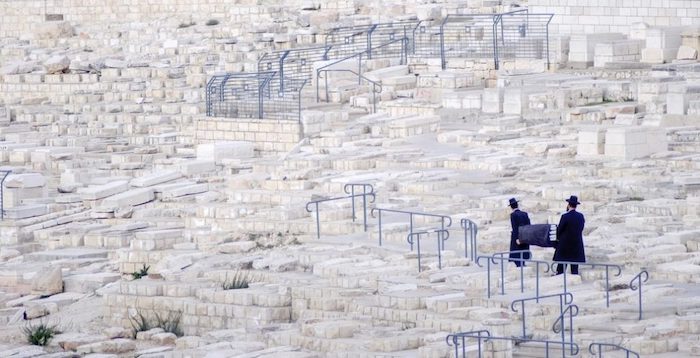
The world is increasingly concerned with environmental degradation, yet funeral practices have been largely overlooked until recently. In the mid-1990s, the National Centre for Groundwater Research and Training at the University of Technology, Sydney, examined nine cemeteries and crematoria around Australia. It found the biggest problem with these facilities was the potential for contamination from infiltrating stormwater carrying toxins from caskets and bodies to the underlying water table. But it took another decade for significant wide-ranging studies to emerge. The UK’s Environment Agency 2004 report into potential groundwater pollutants from cemeteries considers many factors leading to soil and groundwater contamination from human burial, including the organic and inorganic matter of bodies, coffins and other non-body grave contents.

Cemeteries are among the most toxic of modern landscapes in both their immediate and ongoing environmental impacts and intensive use of resources. The 2014 documentary A Will for the Woods outlines the problem of a typical American-style funeral, citing the toxic, resource-intensive materials of caskets that have become common in much of the world. “In the U.S. alone, approximately 33 million board feet of mostly virgin wood, 60,000 tons of steel, 1.6 million tons of reinforced concrete, and five million gallons of toxic embalming fluid are put into the ground every year.” They note further the large tracts of land and high maintenance of constant mowing, watering, and the application of chemicals.
Cremation is mistakenly thought to be more green. It actually releases considerable particulate pollution, CO2 (approximately 50 kilograms per cremation, on average), and toxins such as dioxins, furans, and mercury into the atmosphere.
Then there are a host of more modern elements such as mercury from dental fillings, pacemakers, esophageal tubes and other body implants which leach into groundwater once the body has decayed. Another significant pollutant emerged as people began to be buried with their mobile phones and other electronic devices. The trend was noticed in the United States when batteries started exploding during cremations.
Various environmentally-friendly techniques are being explored to dispose of bodies, including freeze-drying, shattering and dissolving. These offer significant space and land savings with minimal energy use and pollution compared with cremation. They also offer new, as yet unexplored, potentials for interment design and funeral landscaping.

A landscape history of burial grounds
Until a little over a century ago, cemeteries were located in churchyards or nearby. As churches were typically sited on high ground, there were few problems with leaching into groundwater or waterways. Still, overcrowding and the fact that urban graveyards were not always on elevated ground contributed to the potential for corpses to pollute groundwater, especially during epidemics of disease and plague, such as cholera and yellow fever. It wasn’t until Dr John Snow, one of the founding fathers of modern epidemiology, proved the vital connection between groundwater and the spread of disease that it was acknowledged. Snow’s famous map – an original type of infographic – of 13 public wells and clusters of cholera outbreak in London’s Soho in 1854 led to water testing that isolated the responsible bacterium. In 1924, Walter Bell wrote that he believed the lessons had still not been learnt from London’s Great Plague of 1664, when groundwater below “thickly buried” church grave yards contaminated the parish wells.
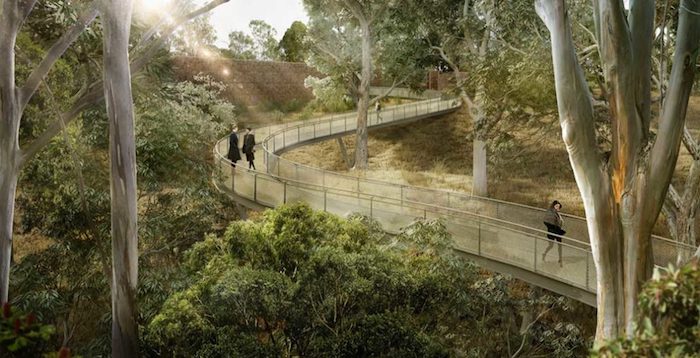
The mass-migration of rural workers to cities during the industrial revolution in Britain meant that new urban cemeteries were needed. However, so too was recreational open space. Long before Birkenhead Park inspired Frederick Law Olmsted’s Central Park in New York, landscaped cemetery-parks of Europe such as Pere Lachaise Cemetery, which opened in 1804 in Paris, quickly led to similar cemeteries in the United States. The same motivations to provide public parks for healthful recreation encouraged ‘rural’ cemeteries to provide a soothing, meditative natural environment and escape from urban crowding. Mount Auburn Cemetery near Boston, consecrated in 1831, was the first rural, or garden, cemetery in the United States and stills serves its dual role as sacred site and pleasure ground.
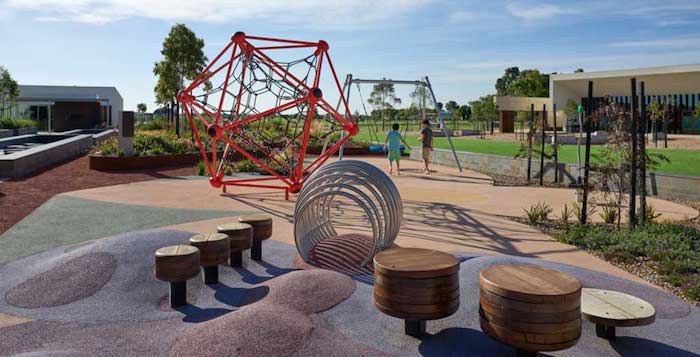
Olmsted worked closely at the Sanitary Commission with Montgomery Meigs, quartermaster general of the Union Army during the Civil War. Meigs sought Olmsted’s advice in landscaping cemeteries. Olmsted prophetically warned that the current fashion for elaborate and artificial gardening should be avoided because it would disappear and advised planting a sacred grove for the war dead using indigenous trees.
The pursuit of urban environments inclusive of the civilising influence of nature was a project that attempted to mitigate the pollution – literal and figurative – of the industrial city. A new and civilised urban landscape was proposed, whose open environment would contribute to “making the city more and more attractive as a place of residence”. There is something of this 19th-century ambition in 21st-century efforts to cleanse cities of contaminating influences. Both publicly- and privately-sponsored greening of city spaces can lead to the eviction of those some might consider undesirable.
More than half of all the cemeteries in the UK were constructed between 1851 and 1914, encompassing the initial emergence of multifunctional landscaped garden cemeteries, followed by the move to more efficient lawn cemeteries. It is likely a much larger proportion were established in Australia during that same time and following the same fashions. Melbourne General Cemetery, opened in 1853, was Victoria’s first ‘modern’ cemetery, designed like a large public park covering 43 planted hectares with generous walking paths and scenic views.
Woodland Crematorium and Cemetery in Stockholm, designed by Erik Gunnar Asplund with Sigurd Lewerentz, is among the most famous and beautiful burial grounds in the world. Although the design evolved during the course of the project from 1915 to 1940, the tranquil, rolling landscape, devoid of graves, echoes some of the aspirations of natural burial grounds. MoMA has exhibited the architectural and landscape drawings of Asplund since 1978. The curators note of Woodlands that the designers wished to “communicate the importance of nature, to which all living things ultimately return”. In 1994, the Woodland Cemetery became one of the few works of 20th-century architecture to make UNESCO’s World Heritage List.
Despite recent concerns over the toxicity of modern burial practices, old cemeteries and burials still have potential to contribute to soil and groundwater toxicity. In particular, Civil War graves in the United States contain bodies that were embalmed with various unregulated secret formulas, laced with arsenic. Embalming was a growth industry during the Civil War era, being the best way to preserve bodies to be returned to distant loved ones. Arsenic does not degrade as bodies rot and so is deposited in the soil and eventually groundwater. It is a carcinogen associated with skin, lung, bladder and liver cancers, among other diseases and cognitive deficits in children.
Another emerging concern with older graves is rising groundwater levels and higher tides. As sea levels rise with global warming, this could lead to contaminated leaching in the near future. It is already having effects in vulnerable low-lying communities where cemeteries are among land urgently being protected.
Natural burials can mitigate, and perhaps eliminate, pollution
There are several reasons why natural burials – also termed green burials or green funerals, organic burials, woodland burials and bushland burials – are becoming more popular. However, a consistently strong motivation is to reduce environmental impacts, including direct toxic contamination of existing sites, and the protection of particular landscape ecologies. Natural burial can do this in several ways: digging shallowly without heavy earth-moving equipment, preparing the body without chemical preservatives or disinfectants, using a compostable coffin or shroud or none at all, avoiding burial of any other toxic or non-biodegradable items, having no headstone or high embodied-energy marker, and conducting any services including food, printing, transport, music and more and in a sustainable non-polluting, no- or low-energy way.
Landscape architect and academic Andy Clayden of the University of Sheffield, researches the planning, design and management of cemetery landscapes. He has led a team that co-authored the first book to review the history and past 20-year growth of natural burials: Natural Burial: Landscape, Practice and Experience, published in 2014. In a paper last year his team focused on the significant contributions of natural burial sites to ecosystem services in England. The ecological benefits are mirrored by shifting perceptions as “natural burial is transforming the traditional cemetery, with its focus on an intensively managed lawn aesthetic, towards a more habitat rich and spatially complex landscape with its own distinctive identity.” Coupled with an ethical-aesthetic shift in death management, this approach is opening many areas of potential engagement and exploration for designers across the full spectrum of services.

A number of organisations have emerged to variously support and oversee natural burials. The United Kingdom’s Natural Death Centre is the oldest, established in 1991 and offering support, advice and extensive links to information for the public. The Green Burial Council in North America, founded in 2005, offers certification as well as education and advocacy. Also established in 2005 is Canada’s Natural Burial Association, serving both the public and burial operators. In 2014 a diverse group of professionals in Australia founded the Natural Death Advocacy Network (NDAN) with a wide remit to advocate, as well as encourage discussion and conduct and disseminate research.
One important aspect of natural burials is the covering a body receives. A co-founder of NDAN and passionate advocate for natural burial, Dr Pia Interlandi, has researched the effects of clothing and textiles on decomposition. Her PhD involved rigorous immersion in the rituals associated with preparing the body for interment. Garments from this investigation have been exhibited at the London Science Museum and London Print Studio. In 2012, she started her current practice, Garments for the Grave, where she now designs custom-made biodegradable burial garments with client family participation.
Australian natural burial sites
Bushland or natural burial is possible in portions of many cemeteries throughout Australia, although there has been little attention given to their complex landscape design. Two years ago Burnie City Council looked to offer a dedicated natural burial site in Tasmania, acknowledging the rising interest in natural burials while, capitalising on the state’s clean, green image and natural scenery. Kemps Creek Cemetery, which includes the Sydney Natural Burial Park, claims to offer Sydney’s first eco-burial area. A different and popular service is being offered in the south-west of Victoria. Upright Burials opened in 2010 as Australia’s first vertical burial ground. As well as taking up much less space than conventional burial, the Kurweeton Road Cemetery adheres to many further environmentally-friendly processes such as an absence of any grave-markers. The exact location is GPS recorded and provided to family and friends. Queensland funeral directors advise of two ‘green’ burial sites within cemeteries both operated by local councils: one as part of the memorial gardens at Lismore in northern NSW and another, which is the state’s only registered green burial site, within Alberton Cemetery on the Gold Coast.
An award-winning master plan for Acacia Remembrance Sanctuary within Itaoui Woodland Park was the first of its type planned in Australia. Developed by landscape architects McGregor Coxall working with Chrofi, the project encompassed 10 hectares of degraded, yet protected bush ecology west of Sydney. The design philosophy looked to establish a model that would not only protect, but reinstate the flora and fauna of the site. It has considered ongoing maintenance as part of full environmental considerations, including having all energy requirements generated on site, on-site water treatment and reuse, and limited slashing of the indigenous grasslands to create pathways instead of introducing exotic grasses and regular mowing practices.
Aspect Studios were responsible for the design of 11 hectares of native gardens at Bunurong Memorial Park, which opened in 2016. Much like early garden cemeteries, the realised proposal caters for the wider community’s need for open space, accommodating weddings, funerals and fitness groups, as well as picnicking and play. Bunurong also includes a new natural burial area, Murrun Naroon.
Reconsidered design approaches for cemetery landscapes, both expanding and new, are clearly an important area of innovation that will curb land contamination. However, new building opportunities can also reset expectations. Harmer Architecture’s Atrium of Holy Angels Mausoleum in Fawkner Memorial Park north of Melbourne was a rare chance to interpret a very old form. The nature of mausolea help contain any contaminants by isolating bodies and congregating remains, which takes up less space and resources.
Despite the thorough, successful translocation of 19th-century British garden cemeteries, followed by equal enthusiasm for the shift to 20th-century lawn cemeteries, Australian researchers warned in 2011 that: “If the concept of green burials is to have any degree of success in Australia, burial operators, land managers and planning authorities cannot simply transplant the practices employed in North America or Europe into the Australian context.”
Perhaps a similar translation of considered species, ecology and aesthetics is needed, as was slowly adapted when Australian landscape gardeners and designers such as Edna Walling looked to the British ‘wild garden’ of William Robinson. The wilderness of Britain is not the wilderness of New South Wales or Victoria or the many smaller patches of ecologies that Walling became familiar with while documenting roadside vegetation and that changed her approach to landscape design.
If the natural burial movement is to achieve its fullest potential to enhance environments, rather than just refrain from harming them, designers should aim to serve both new sensitivities around death and memorialisation, as well as new sensitivities toward our threatened environments.
Complete Article ↪HERE↩!
Transition Green Burials is Promoting the Growth of This Eco-Friendly Practice
Climate change is on everyone’s mind as initiatives for renewable energy and sustainable public habits adapt to a more environmentally-friendly approach.
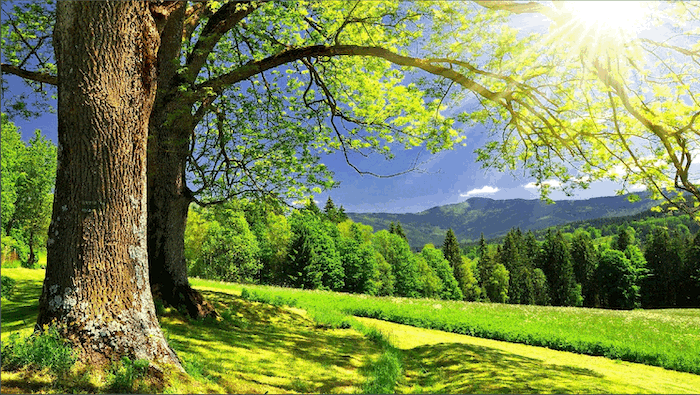
While numerous avenues for reducing the adverse impact of energy production and ocean contamination dominate most of the narrative around preserving the ecosystem, many more obscure and often overlooked practices lead to the accretion of environmental contaminants.
One of those areas is the traditional Western approach to burial practices and its subsequent impact on local ecosystems. Embalming fluid, typically composed of formaldehyde, ethanol, and water, is commonly used in burials throughout Western culture to preserve bodies for funeral services before being put to rest.
However, the proliferation of costly funeral services has led to increased exposure to formaldehyde, both to individuals who work with it directly and the environment. Compounding the issue is the myriad metals — such as bronze and steel — that are laid to rest during funeral services that do not readily compose in the soil. As demand for cemetery land undoubtedly grows, the adverse impact of the contaminants synonymous with funeral practices grows.
Transition Green Burials is a company focused on promoting the conversion to more eco-friendly burial practices, known as ‘green burials’ or natural burials.
Identifying Sources of Burial Pollutants
Formaldehyde produces the most concerning ecological threat with common burials practices because of its widespread use and identity as a dangerous animal carcinogen.
Highly toxic to animals, formaldehyde is implicated in cancer, nervous system disorders, and lateral sclerosis. Formaldehyde can also break down into urotropine during decomposition, an anti-bacterial chemical commonly used in antibiotics for bacterial infections, but that is harmful to the natural bacteria in the soil.
Pesticides and herbicides are often used in the internment process too, compounding the negative effects of formaldehyde on the soil surrounding burial areas. The downstream effects of the chemicals used in the internment process can eventually even lead to contamination of underground water sources.
Outside of common internment practices, cremation processes also lead to the emission of mercury and toxic plastic into the environment. Further, high carbon loads are needed for the cremation process, leading to increased carbon emissions, one of the fundamental focuses of environmental initiatives like The Paris Climate Agreement. With nearly 50 percent of Americans selecting cremation today, few realize the pollutants that are dispersed into the air from the procedure.
Many conservation groups, like the Green Burial Council, are seeking to promote more eco-friendly practices by limiting the use of embalming fluids, herbicides, and pesticides in the process. Further, some groups are promoting the use of biodegradable coffins, design to break down over time, mitigating the long-term impact of steel or brass caskets that can destroy habitats as burial grounds expand.
Transitioning to Fixed Cost Green Burials
The Green Burial Council cites the rise of certified green burial sites across the US as an indication of the legitimacy of their cause, and their emphasis on protecting worker health, reducing toxic pollutants, and promoting habitat conservation is gaining traction among various burial grounds and activists.
Similarly, Transition Green Burials is taking a hybrid approach to the issue with a focus on both the environmental impact and financial advantages of green burials through their TransitionCoin, which is designed to incentivize people to change conventional burial practices.
TransitionCoin provides a fixed cost for green burials — including all of the associated services required in the course of the burial. The targeting of a fixed price is derived from the rapidly increasing cost of funeral home services, which can reach as high as $25,000 and can lead to financial struggles among grieving families.
With a fixed cost for any green burial, people who select TransitionCoin can reduce financial costs and contribute to the growing Green Burial Movement.
The conventional burial practices among Western countries using caskets and multiple proceedings through a funeral home is also more of an isolated and recent phenomenon that began following the Civil War in the US. Several religions — including Judaism — forbid the embalming of the deceased out of religious tradition, and preserving chemicals or embalming fluid are also rarely used in Islamic burials.
Green burials grounds and services have also emerged across the US already. States like California and South Carolina have certified green burial preserves set up that are registered with the Green Burial Council. The Green Burial Council provides certified standards for funeral services, cemeteries, and burial product manufacturers. There are currently 39 states with funeral providers accredited by the Green Burial Council for eco-friendly burials.
The notion of analyzing green burial practices is one of the more obscure concepts within environmental conservation, but, nonetheless, is important to take into consideration as the widespread use of formaldehyde and pesticides continue. Transition Green Burials and the Green Burial Council are actively promoting the shift to a more eco-friendly approach, and it is beginning to gain traction among both environmental activists and funeral parlors.
Complete Article ↪HERE↩!
For this Hong Kong undertaker, every working day is a matter of life and death
Ogden Chan puts his best into making sure bereaved families are taken care of but admits being detached is a necessary part of the job
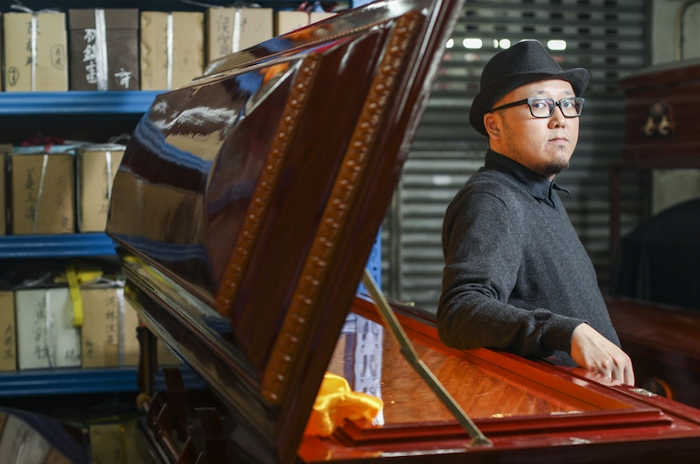
By
January was a busy month for undertaker Ogden Chan Yan. “It’s peak season for us because more people are dying due to the fickle weather, and many families don’t want to wait until after the Lunar New Year to bury their dead,” the 36-year-old says.
Rows of cardboard boxes containing the ashes of his clients’ loved ones line the shelves of Chan’s shop in Hung Hom. His clients have left the ashes for safekeeping until their deceased are assigned columbarium niches. Chan reckons there are almost 200 of these boxes.
“It’s the typical Hongkonger’s fate: the living can’t afford homes, and the dead can’t find final resting places.”
It has been seven years since Chan joined the industry as an apprentice. Although he applied for the apprenticeship “out of curiosity”, his interest in the funeral sector began in his early teens.
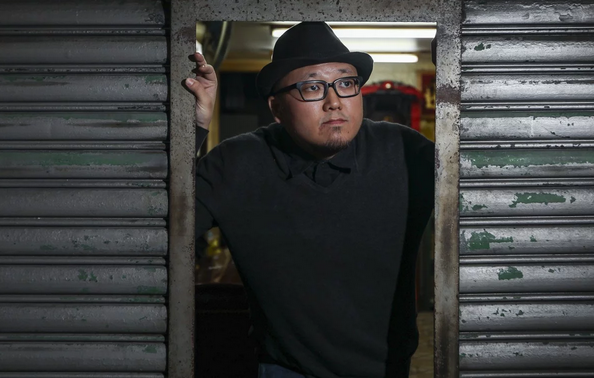
“I wanted to be a mortuary makeup artist because I was under the impression that people in the funeral business made a decent living because there’s always going to be a demand for the service, and I liked how it was something of a craft.”
But that initial perception was somewhat misguided. Chan says that his business has only recently become profitable. Before, he was barely getting by. He now oversees everything from preparing documents and booking cremation services to planning religious ceremonies. As a nod to his childhood dream, he also acts as a makeup artist for his clients’ loved ones.
“I talk to the corpses when I put makeup on them because I believe that our consciousness remains even after we die.”
After a while, he adds: “That said, I’ve never seen a ghost.”
Chan says he has been fearless all his life, even as a child, when he saw a corpse for the first time lying in a construction site in mainland China. The second time he saw a corpse was before he joined the industry, when he was volunteering for a service for inmates. The corpse was already decomposing.
“What impressed me was not the appearance of the corpse – which looked like a zombie out of a video game – but the smell.”
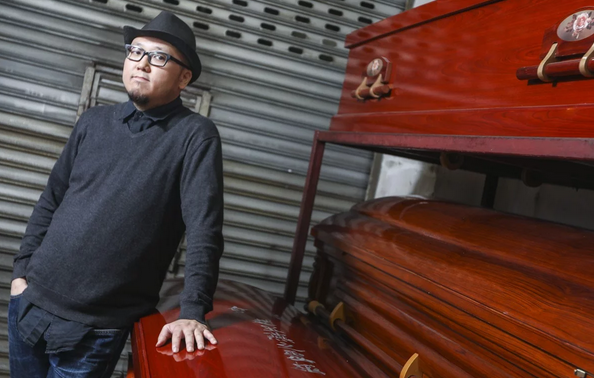
The smell of decay was something Chan had to get used to as soon as he became an undertaker’s apprentice, as was staying detached from clients and their grief.
“In time, I adopted a somewhat dispassionate view of death. As a service provider, I get satisfaction from organising a successful service. After all, it’s the last ceremony a person ever has on this Earth.”
But when Chan presided over his father’s funeral service five years ago, things got personal.
“While making the arrangements, I kept thinking of the times I’d spent with my father. What helped with my grieving process was the fact that I knew exactly what had to be done after his death.”
Chan says he is happy to see that Hongkongers have become more willing to explore and discuss issues related to death, but believes education about death and dying should start young.
“I’ve seen four or five year-olds bawling at their parents’ funerals. They’re old enough to learn the meaning of life and death.”
At that, Chan offers his take on life: “Don’t waste time. Even if you’re given 80 years to live, it’s still not enough. Do as much as you can while you’re around, so when you’re on your deathbed looking back on your life, you can think about all the marvellous things you’ve done.”
So, what is on Chan’s bucket list?
“I want to get a bachelor’s degree. And, like every other Hongkonger, I want to be able to afford my own home.”
Complete Article ↪HERE↩!
Washington State Weighs New Option After Death: Human Composting
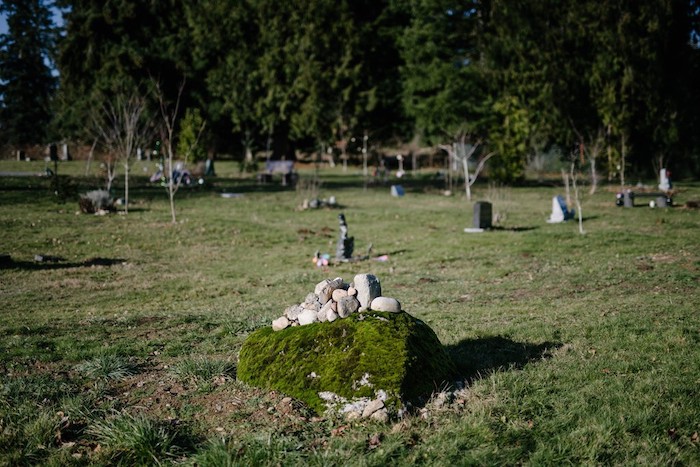
By Kirk Johnson
Leslie Christian recently added unusual language to her living will: After death, she hoped her remains would be reduced to soil and spread around to help out some flowers, or a tree. In essence, compost.
“It seems really gentle,” said Ms. Christian, 71, a financial adviser. “Comforting and natural.”
A bill before the Washington State Legislature would make this state the first in the nation — and probably the world, legal experts said — to explicitly allow human remains to be disposed of and reduced to soil through composting, or what the bill calls recomposition.
The prospect has drawn no public opponents in the state capital as yet, but it is a concept that sometimes raises eyebrows. Funeral directors say a common reaction to the idea, which has been explored and tested in recent scientific studies, is to cringe.
“There’s almost a revulsion at times, when you talk about human composting,” said Brian Flowers, the managing funeral director at Moles Farewell Tributes, a company north of Seattle that supports the bill.
In truth, composting is an ancient and basic method of body disposal. A corpse in the ground without embalming chemicals or a coffin, or in a quickly biodegradable coffin, becomes soil over time.
But death certificates in many states include a box that must be checked for burial or cremation, with no other options. Aboveground composting, through a mortuary process that requires no burial or burning of remains, is a new category without regulation about how it should be done or what can be done with the compost. What that means is that hardly any funeral director — even in states where laws about human remains are loosely worded — would risk offering it without state permission.
Pete Seeger, the folk singer, crooned about the idea: “If I should die before I wake, all my bone and sinew take. Put them in the compost pile to decompose a little while,” goes the song “In Dead Earnest.”
“When radishes and corn you munch you may be having me for lunch.”
In America, there are regional patterns to what comes of bodies after death. In the South and Midwest, where religious or cultural traditions run deep, more families opt for caskets and concretes vaults, and fewer choose cremation, experts say. In the Northeast, where family roots sometimes extend back centuries, people often favor burial in local cemeteries alongside ancestors.
In the Pacific Northwest, by contrast, death is treated somewhat differently, for reasons that sociologists and religious experts have long pondered. It’s a region where transient newcomers have defined the culture since pioneer days. Church attendance is among the lowest in the nation. Preservation of the environment is a central concern.
In Washington State, a larger percentage of residents are cremated than in any other state. Washington has more “green cemeteries,” which encourage a return to nature without manicured lawns and chemicals, than most states; only California and New York have more. And laws allowing physicians to help terminally ill patients hasten their deaths, known as “death with dignity,” were pioneered in the Pacific Northwest.
“It’s this interesting combination of environmental sensibility and individual choice,” David C. Sloane, a professor of public policy at the University of Southern California, said of the Northwest region. Now the prospect of legalized human composting, he said, puts many of those regional impulses in a spotlight. “It’s a test case for seeing how people think,” he said.
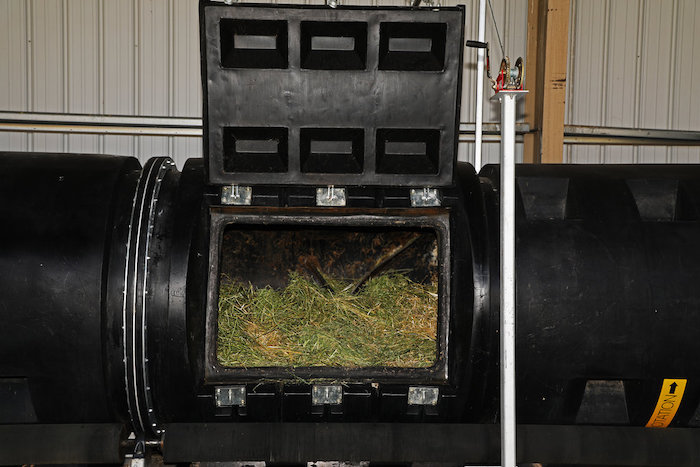
Jamie Pedersen, a Democratic state senator from Seattle, is leading efforts to pass the legislation to permit a composting process after death.
Democrats control both chambers of the State Legislature, and Mr. Pedersen, the bill’s sponsor, said he had enlisted support from Republicans as well. Gov. Jay Inslee, a Democrat, has taken no position, a spokeswoman said.
At a hearing this month, no one spoke in opposition, though a state association of funeral directors said that it hoped clearer information could be added to the bill about where composted remains could be distributed. It was uncertain, too, whether such a measure would be seen as a priority during a legislative session crowded with issues that may be easier for politicians to talk about and win points on.
The bill would also legalize a separate process sometimes known as water cremation or alkaline hydrolysis. Under that process, already legal in 16 states, bodies are dissolved using a mixture of heated water and lye, leaving behind bone fragments and a sterile liquid.
People are drawn to the idea of aboveground decomposition mainly for environmental reasons, Mr. Pedersen said. There’s no coffin, no chemicals, none of the fossil fuels that would be needed for cremation, and no expensive cemetery plot required. Some religious traditions also favor ideas of simplicity and of earth returning to earth.
Though the process sounds simple, it would not be cheap. Preliminary estimates suggest that it could cost at least $5,000 — less, perhaps, than an elaborate burial service, but more than the most basic cremation.
In a study last year at Washington State University, six bodies donated for the research were placed in a closed container, wrapped in organic materials like alfalfa, then bathed in a stream of air warmed by microbes, and periodically turned. Lynne Carpenter-Boggs, a professor of soil science and sustainable agriculture and the lead researcher in the study, said that after about 30 days, the bodies essentially became soil.
Fears that composted remains might smell bad or contain toxic elements — from dental fillings, for example, or pharmaceutical residues — were allayed, Dr. Carpenter-Boggs said. She said that the heat generated by micro-organisms broke down organic matter and pathogens, and levels of pollutants like cadmium and mercury were within federal limits.
“It certainly is feasible that families would take home a small portion that they could keep for a long time,” Dr. Carpenter-Boggs said. “Or families could bring home a small amount that would be interred into their landscape, placed under a loved one’s favorite tree, similar to what people do with cremains.”
Katrina Spade, the founder and chief executive of Recompose, a Seattle company that hopes to build the first facility to use the new method and conduct funeral services based around it, said the movement toward cremation — now used in more than half of deaths in the nation — has led to an erosion of essential rituals. Remains are often just picked up from a crematory, she said, and that’s that.
“This is not simply a process to convert bodies to soil; it’s also about bringing ritual and some of that ceremony back,” Ms. Spade said.
Ms. Christian, the woman who is hoping recomposition will be an option after she dies, says she has long been uncomfortable with the other choices. She has ruled out burial. And she does not like the idea of cremation because of environmental costs — emissions and climate impacts of fossil fuels used in the burning process. But her friends remain divided on the issue.
“The vast majority are like, ‘That is so cool,’” she said. “And then the other response is, ‘Oh, gross.’”
Complete Article ↪HERE↩!
When Death Was Women’s Business
In the 19th century, women called “watchers” tended to the dying and the dead.

By: Livia Gershon</a
In recent years, many Americans have begun looking for new ways to approach death. The death-positive movement supports people who prefer to die at home, and even those who wish to care for the bodies of loved ones the way many families did before the rise of the funeral industry. Historian Karol K. Weaver took a close look at that earlier approach, studying the business of death in early nineteenth century Pennsylvania, when care for the dying and dead fell mostly to women.
In those years, Weaver writes, watchers or watch-women—sometimes also referred to with the more generic term “nurse”—tended to the dying. These might be friends, family members, or hired help.

The watchers offered physical care and prayer, and organized visits by clergy and loved ones. Another important part of their job was observing the attitude of the dying person. If they could report a Good Death—characterized by courage and faith—it would comfort the other survivors. On the other hand, a Bad Death filled with struggle and pain could make for a cautionary tale aimed at the insufficiently pious.
Weaver writes that the final and most important job of a watcher was to verify that her charge was dead, observing the cessation of breath and even shaking the body to be sure no life remained.
Once the watcher’s work was done, “layers out of the dead” would wash, dress, and groom the body. They would also close the mouth of the deceased, using a tied cloth or a stick propped between the chin and breastbone, and use coins or other objects to keep the eyes closed. Layers out might also perform the skilled jobs that would later fall to undertakers, such as removing internal organs, blocking orifices, and slowing putrefaction by applying alum-covered cloth or filling body cavities with charcoal.
Like watchers, some layers out were unpaid family members or friends, but others were paid professionals. Looking at Philadelphia city directories from the early nineteenth century, Weaver found business listings for these women. Sometimes, they also advertised themselves as nurses or midwives—jobs that involved intimate care in a domestic setting just as laying out the dead did. Some listed themselves as “widows” in the directories. Weaver writes that this title suggested their connection with death and also explained the lack of a husband’s income that forced them to work for money.
Over the following decades, women’s death work declined. Increasingly, people died in hospitals rather than at home. With the Civil War came the need to transport Union soldiers’ bodies home, inspiring the rapid growth of undertaking as a business—often a father-and-sons affair. Now, families had a one-stop shop for coffin, burial plot, hearse, and the care and preservation of the body.
By 1867, the Philadelphia directory listed 125 male undertakers, one female undertaker, and four female layers out of the dead. The death industry as we know it today had been born.
Complete Article ↪HERE↩!
Washington bill would make it legal to compost human remains into soil
Recomposting would let people skip traditional burial and cremation practices for a greener option.

Would you prefer to be cremated or buried in a casket? Washington might give residents an additional option if it becomes the first US state to legalize an unusual end-of-life practice — composting human remains.
“Recomposting” — which advertises as more environmentally friendly than traditional funeral practices — is a process where a human body is quickly decomposed using heat-loving microbes and beneficial bacteria.
The temperature is kept at 131 degrees Fahrenheit (55 Celsius) for 72 consecutive hours. The remains are then added into soil that can be used as mulch for trees, flowers and other plants.
Washington State Sen. Jamie Pedersen, a Democrat, plans to introduce a recomposting bill in January, NBC reports.
If passed, the bill would legalize recomposting in Washington so citizens could choose an alternative to the traditional methods of burial and cremation of human remains.
The Seattle company Recompose would be responsible for the actual composting of human bodies.
In 2017, Pederson introduced a similar bill but says it failed due to opposition from religious groups, according to NBC.
Neither Sen. Pedersen or Recompose, the company that would be responsible for the actual composting of human bodies, responded to a request for comment.
“The transformation of human to soil happens inside our reusable, hexagonal recomposition vessels,” the Recompose website says. “When the process has finished, families will be able to take home some of the soil created, while gardens on-site will remind us that all of life is interconnected.”
During the recomposting process, bodies are screened for non-organic materials like metal teeth fillings, pacemakers and artificial limbs, which are recycled whenever possible.
The entire process takes a month, and can produce a cubic yard of soil per person, according to Recompose.
While this may sound ideal to people wanting an environmental-friendly option to burial, not everyone can go through the recomposting process. Some pathogens (like the bacteria that causes anthrax) may be resistant to the composting process, so people with certain health conditions may be ineligible.
While recomposting has yet to be made legal in the US, “green burials” (bury human bodies without chemicals) are legal in all 50 states. Currently, recomposting a human body is legal in Sweden.
Complete Article ↪HERE↩!
Rethinking Death with Natural Burial Practices
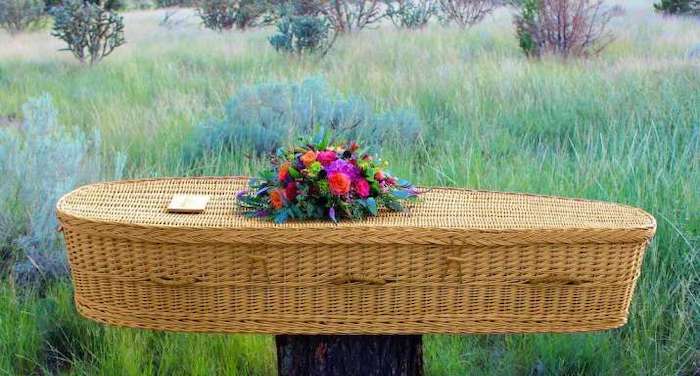
Death is our universal condition, and every culture has ways to deal with bereavement and loved ones’ remains. While these rites vary greatly, it is becoming apparent that many of the world’s traditional burial practices are unsustainable in the face of overpopulation and climate change. All the funerals I have attended have their roots in Christianity, and require that the deceased either be cremated, or buried in a coffin and vault. In America alone, it is estimated that every year traditional burials result in the deposit of: “20 million feet of wood, 4.3 million gallons of embalming fluids, 1.6 million tons of reinforced concrete, 17,000 tons of copper and bronze, and 64,500 tons of steel being.” (The New York Times)
It naturally follows that the toxins and heavy-duty materials used to embalm, preserve and contain bodies has a detrimental effect on the environment. While cremation was thought to be an ecologically sound alternative, the procedure actually causes high levels of carbon dioxide to be released into the atmosphere. In light of the somber findings of the UN Intergovernmental Panel on Climate Change’s (IPCC) report on climate change, it is clear that drastic steps are needed to prevent the environmental collapse. It is not only what we do during our lifetime that can affect change: innovative eco-burials are proving that we can reduce our carbon footprint even in death.
Funeral rituals vary greatly across the globe, from the New Orleans’ Jazz Funeral, which blends West African, French, and African-American traditions, to the Turning of the Bones in Madagascar, where relatives commemorate the diseased by dancing with their bodies. My personal favorite is the sky burial, a tradition that is prevalent in Tibet, amongst other cultures, and which involves depositing bodies at high elevations so that they may be consumed by vultures. Having attended only a handful of funerals in my lifetime—all of which were in Western cultures and did not include an open casket—the notion of seeing a dead body is completely foreign to me, not to mention the inevitable scavenging that follows a sky burial.
However gruesome the ritual may appear to the outsider, it stems from real environmental and spiritual practicalities. Indeed, in many parts of Tibet and Qinghai, a lack of timber and fuel made cremation impossible, just as the sturdy and rocky grounds prevented earth burials. Furthermore, the ritual is considered to be an act of charity on the part of the deceased, who makes a final offering to other sentient beings.
The notions of compassion and impermanence are essential to Vajrayana Buddhism, and sky burials are a reflection of these virtues. In fact, charnel grounds are also cited in the Early Buddhist canon; in the Satipatthana Sutta, the Buddha encourages his followers to reflect on impermanence by observing dead bodies undergo various stages of decomposition. Unfortunately, with the number of vultures diminishing every year, sky burials are becoming somewhat of a rarity.
With overpopulation rising, funeral practices around the world are facing similar difficulties. In Korea, for example, the lack of burial space has forced many families to dig up the remains of their ancestors and have them cremated. Add to this the imminent threat of climate change, and it is no wonder that funeral practices around the world have to adapt.
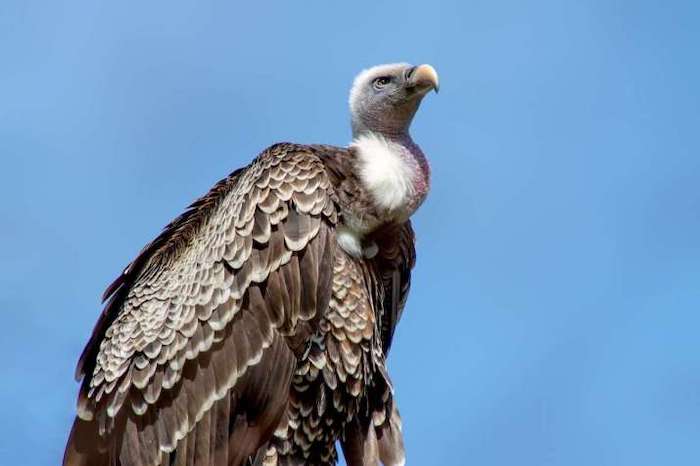
Fortunately, a number of people and organizations are coming up with innovative solutions to this problem. There are now several companies in Korea who specialize in transforming people’s cremated remains into colorful beads (this provides an alternative to the urn, which can appear eerie to some). Others have opted to have their remains turned into reef balls that are then placed in the ocean, creating a natural habitat for marine life.
For those who want to bypass cremation because of its negative effects on the atmosphere, there are now a number of green alternatives that promote the natural decomposition of bodies: allowing remains to seep directly into the earth and provide sustenance for the surrounding flora and fauna.
In order to be environmentally friendly, biodegradable materials are used to make cloths, shrouds and caskets; and artificial markers such as tombstones are replaced by naturally occurring flora, or a GPS system. According to the non-profit organization The Green Burial Council, going green also has its financial benefits, since eco-burials can significantly lower the cost of posthumous arrangements. For example, prices for a complete natural burial at Honey Creek Woodlands (Georgia) start at US$3,400 —approximately half the cost of a typical modern funeral.
For better or for worse, concerns over the future of our planet are forcing us to make changes to age-old traditions. It is perhaps for this reason that the Catholic Church, and many funeral industries, have embraced eco-burials; and in 2015, the Funeral and Memorial Information Council found that 64 percent of adults aged 40 and up would consider having a green burial. Linda Holzbaur, a member of the Greensprings Natural Cemetery board, explains that when she buried her two family members, everyone “chipped in” with digging the grave, making it a very personal experience for all involved. Artist Jae Rhim Lee, who devised a burial suit made of flesh-eating mushrooms, encourages the West to face death head on and address “the actual process and acceptance of decomposition.” (TedBlog)
In this way, natural burials not only help to protect our planet; they also provide us with an opportunity to rethink death and to incorporate lessons of compassion, interconnectedness, and impermanence into our rituals.
Complete Article ↪HERE↩!
